 Arthur Koestler, noted author and founder of Exit,
wrote before his own suicide: "If the word death were absent from
our vocabulary, our great works of literature would have remained unwritten,
pyramids and cathedrals would not exist, nor works of religious art-and
all art is of religious or magic origin. The pathology and creativity of
the human mind are two sides of the same medal, coined by the same mintmaster"
(1977).
Arthur Koestler, noted author and founder of Exit,
wrote before his own suicide: "If the word death were absent from
our vocabulary, our great works of literature would have remained unwritten,
pyramids and cathedrals would not exist, nor works of religious art-and
all art is of religious or magic origin. The pathology and creativity of
the human mind are two sides of the same medal, coined by the same mintmaster"
(1977).
According to Franz Kafka, "Man cannot live without
a continuous confidence in something indestructible within himself" (Choron,
1964:15). In other words, the will
for immortality is a central drive of the human primate--perhaps even more
so nowadays in postmodern cultures where an increasing proportion of the
population not only survives into old age but reaches Maslow's
need for transcendence. For an inventory of human envisionments of an
afterlife see the Life
After Death Database. Five cultural
strategies have been identified by which such psychological needs for indestructibility
have been addressed (Morgenthau, 1967; Shneidman, 1973; Lifton, 1979; Kalish,
1985): the biological, religious, creative, natural and mystic modes.
The biological mode involves one's genetic immortality,
which provides a sense of continuity with one's ancestors and descendants.
Bertrand Russell, in discussing this aspect of parenthood, writes: "...there
is an egoistic element, which is very dangerous: the hope that one's children
may succeed where one has failed, that they may carry on one's work when
death or senility puts an end to one's efforts, and, in any case, that
they will supply a biologic escape from death, making one's own life part
of the whole stream, and not a mere stagnant puddle without any overflow
into the future" (cited in Shneidman, 1973:47-48).
Developments in stem
cell research have certainly enhanced hopes for one's own biological
immortality. Imagine being able to grow such spare body parts as new brain
or muscle cells, skin, hearts or lungs, or being able to cure such ailments as
Alzheimer's Disease, Parkinson's, leukemia, spinal-cord injuries, multiple sclerosis,
or blindness. (See site of the American
Association for the Advancement of Science Report on Stem Cell Research.)
Unfortunately the most programmable of stem cells come from
human embryos and fetuses, which has put this line of research into the crosshairs
of the anti-abortionists. (See the National Bioethics Advisory Commission's
"Ethical Issues in Human Stem Cell
Research.") Also enhancing the prospects for biological
immortality are developments in DNA preservation, which has now become a
business with such players as Genternity
LLC, whose website includes the thought "If the idea of physical
immortality appeals to you, Genternity provides the only scientifically feasible
means. On the other hand, regardless of how you perceive the idea of
physical immortality, to reject the option of DNA preservation is to
deliberately decide, once and for all, to discard the individual's unique
blueprint."
- Let Lazaron BioTechnologies save the DNA of your favorite pet for future cloning. Genetic Savings and Clone, the nation's first all-inclusive pet cloning enterprise,
now finds itself in competition with RePet and
others in the pet resurrection business. And why, ask the folks at the Human
Cloning Foundation, does just Fido get
cloned? One can also become
involved in the Raelian Revolution and be
shown a philosophy that links UFOs with personal cloning. For Americans' attitudes toward
human cloning see Bernice Kanner's
"Are You Normal? Human Clones." Other rich resources
include Human Cloning:
Religious Perspectives from the May, 2001 Pew Forum on Religion and Public
Life, the Scientific
and Medical Aspects of Human Reproductive Cloning (2002) from the National
Academy Press, and Human
Cloning and Human Dignity: An Ethical Inquiry (2002) from The
President's Council on Bioethics.
 The religious mode entails the eternal life of the
believer, whether obtained through resurrection,
reincarnation
(see also the homepage of Reincarnation
International), metempsychosis,
or some other form of rebirth
(latest twist: Christians
For the Cloning of Jesus). Perhaps to this list we should add belief in Transhumanism, which views
aging and death as surmountable barriers to "total self-transformation and personal
freedom." Of course, what could be better than living forever, eternally remaining
oneself in some cosmic Disneyland realm? As developed in "You
Never Have to Die!", Americans are not only among the world's
firmest believers in an afterlife but they are quite optimistic about what
this existence holds. This is not to deny that there
are the detractors, that there is not a shred of scientific evidence
to support belief in the existence of any other dimension(s) of reality
beside the physical wherein the dead reside. Further, there are profound
conceptual difficulties with the heaven construct, as Michael
Martin develops in "Problems with Heaven."
The religious mode entails the eternal life of the
believer, whether obtained through resurrection,
reincarnation
(see also the homepage of Reincarnation
International), metempsychosis,
or some other form of rebirth
(latest twist: Christians
For the Cloning of Jesus). Perhaps to this list we should add belief in Transhumanism, which views
aging and death as surmountable barriers to "total self-transformation and personal
freedom." Of course, what could be better than living forever, eternally remaining
oneself in some cosmic Disneyland realm? As developed in "You
Never Have to Die!", Americans are not only among the world's
firmest believers in an afterlife but they are quite optimistic about what
this existence holds. This is not to deny that there
are the detractors, that there is not a shred of scientific evidence
to support belief in the existence of any other dimension(s) of reality
beside the physical wherein the dead reside. Further, there are profound
conceptual difficulties with the heaven construct, as Michael
Martin develops in "Problems with Heaven."
However, even
if personal immortality or absorption into some collective oversoul are
not possibilities, there are technological strategies for transcending death: living
as long as possible, being preserved at the moment of death and then
being scientifically resurrected (see Cryonics
Institute, which includes the full text of the book "that started the
cryonics movement," Robert C.W. Ettinger's Prospect
of Immortality, Trudy Weathersby's About:
Cryonics, or the European
Cryonics Page), or living to ensure the immortality of one's
memory.
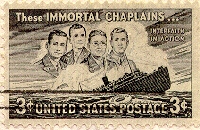
Oblivion can also be avoided through the symbolic mode,
by remaining in the
memories of others through one's works, deeds, eponym (and no
institution appears to have produced more than
the medical establishment),
charities, and infamies. Of memory, Elie Wiesel wrote in All Rivers Run to the Sea:
Memoirs (N.Y.: Alfred A. Knopf, 1995, p.150):
Memory is a passion no less powerful or pervasive than
love. What does it mean to remember? It is to live in more than one world,
to prevent the past from fading and to call upon the future to illuminate
it. It is to revive fragments of existence, to rescue lost beings, to cast
harsh light on faces and events, to drive back the sands that cover the
surface of things, to combat oblivion and to reject death.
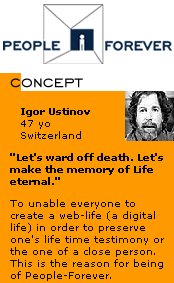 Such immortality was evident in its Gershwin Centennial
Celebration in 1998, when the San Antonio Symphony performed "Rhapsody in Blue." What
made the performance special was that it was Gershwin who was playing the concert grand
piano. The instrument was a 1912 player piano, flown in from Denver, with a roll that had
preserved Gershwin's own keystrokes. As the music was about to begin a spotlight moved
across stage as if following the composer as he was taking his seat. An attendant even brought
a glass of wine and placed it above the keyboard for George to drink. Though "dead" since
1937, Gershwin was present. At the end of the concert, Wayne Marshall performed with
Gershwin. Sitting on one half of the bench--and ever careful not to be in the way--he
improvised on the upper scales as Gershwin played two more of his pieces.
Such immortality was evident in its Gershwin Centennial
Celebration in 1998, when the San Antonio Symphony performed "Rhapsody in Blue." What
made the performance special was that it was Gershwin who was playing the concert grand
piano. The instrument was a 1912 player piano, flown in from Denver, with a roll that had
preserved Gershwin's own keystrokes. As the music was about to begin a spotlight moved
across stage as if following the composer as he was taking his seat. An attendant even brought
a glass of wine and placed it above the keyboard for George to drink. Though "dead" since
1937, Gershwin was present. At the end of the concert, Wayne Marshall performed with
Gershwin. Sitting on one half of the bench--and ever careful not to be in the way--he
improvised on the upper scales as Gershwin played two more of his pieces.
Through memory the dead come to play many roles in
the affairs of the living. Observes Sandra Bertman:
The dead do not leave us: They are too powerful, too
influential, too meaningful to depart. They give us direction by institutionalizing
our history and culture; they clarify our relationship to country and cause.
They immortalize our sentiments and visions in poetry, music, and art.
The dead come to inform us of tasks yet to be completed, of struggles to
be continued, of purposes to be enjoined, of lessons they have learned.
We need the dead to release us from obligations, to open new potential,
to give us belongingness and strength to continue with our lives
(1979:151).
 Such is the essence of symbolic immortality. It is
through memory that the living hold on to the dead, inspiring such creations
as the Great Pyramids of Egypt and the Taj
Mahal. Memories of the dead bring continuity and meaning to human existence,
which is why political regimes maintain national cemeteries for fallen
warriors, build monuments, and display embalmed remains (When a Moscow
visitor in the 1930s asked a Russian Communist, "Why did you embalm
Lenin?" he was told: "Because we don't believe in the immortality
of the soul" [Leszek Kolakowski, "The Mummy's Tomb." New
Republic, July 4, 1983:33]). New technologies are
now employed in this transcendence enterprise as William Sims Bainbridge details
in his "Web Based
Resources Relating to Technological Means for Achieving Immortality."
Of the artistic variant of this mode of
immortality, W.H. Auden observed in accepting his 1967 National Medal
for Literature:
Such is the essence of symbolic immortality. It is
through memory that the living hold on to the dead, inspiring such creations
as the Great Pyramids of Egypt and the Taj
Mahal. Memories of the dead bring continuity and meaning to human existence,
which is why political regimes maintain national cemeteries for fallen
warriors, build monuments, and display embalmed remains (When a Moscow
visitor in the 1930s asked a Russian Communist, "Why did you embalm
Lenin?" he was told: "Because we don't believe in the immortality
of the soul" [Leszek Kolakowski, "The Mummy's Tomb." New
Republic, July 4, 1983:33]). New technologies are
now employed in this transcendence enterprise as William Sims Bainbridge details
in his "Web Based
Resources Relating to Technological Means for Achieving Immortality."
Of the artistic variant of this mode of
immortality, W.H. Auden observed in accepting his 1967 National Medal
for Literature:
To believe in the value of art is to believe that it
is possible to make an object, be it an epic or a two-line epigram, which
will remain permanently on hand in the world. ... In the meantime, and
whatever is going to happen, we must try to live as E.M. Forster recommends
that we should: `The people I respect must behave as if they were immortal
and as if society were eternal. Both assumptions are false. But both must
be accepted as true if we are to go on working and eating and loving, and
are able to keep open a few breathing holes for the human spirit' (cited
in Laing, 1967:49).

But, as will be seen, such memories can also kindle
fears of the dead, whose spirits and ghosts can create mischief in the
world of the living unless properly placated ritually. See SpiritHistory:
Ephemera for glimpses of the nineteenth-century American spiritualism
movement.
The natural mode of symbolic immortality involves the
continuance of the natural world beyond the individual's lifetime. In a
sense, the ecology movement can be seen as an immortality attempt of many
individuals, whose efforts lead to the preservation of some natural habitat
or species of life. Interesting twists on this mode are provided by Eternal
Reefs, Inc., which turns cremated remains into living coral reefs, and Memorial
Ecosystems, which also reintegrates self remnants into the natural order.
CASE STUDY:
IMMORTALITY FOR THE ELECT IN SPORTS
During the twentieth century has arisen the great spectator
sports phenomenon. When archeologists dug up our culture and find a Dallas Cowboys helmet
and pom-poms, what inferences will be made about the late twentieth century American
culture? American cities float bonds to finance their community temples, the sports complex,
paid for by taxpayers whether fans or not. Indeed, sports rivals religion and politics as a shaper
and reinforcer of core cultural values.
There is, of course, much more to professional sports than
the mere game. With all their rules, regulations, and rigors of training, baseball, football, and
basketball have become high drama expressions of everyday life. As paintings abstract our
visual experience, and music abstracts the auditory, so the game abstracts the interdependency
of individuals occupying specialized roles within the economic sphere of life. There are within
the sociology of sport at least two perspectives which address this relation of sport to cultural
value systems. One, the sport a microcosm of American society thesis, directs attention to the
exaggeration of cultural values within the sports institution: competition, materialism, sexism,
the domination of the individual by bureaucracy, and the accentuation on youth (Eitzen and
Sage, 1978). The second perspective portrays sport as a secular, quasi-religious institution
which, through ritual and ceremony, serves to reinforce social values (Edwards, 1973, p. 90)
and to celebrate social solidarities. It is for these reasons that, like business, sports gets its own
section of newspapers.
Like religion, professional sports use past generations as
referents for the present and confer conditional immortality for their elect, through statistics and
halls of fame. Given the dramatic use of anabolic steroids in sports, even
at the risk of death, athletes are willing to die in exchange for symbolic
immortality. Chicago osteopath Bob Goldman (Death in a Locker Room, II)
asked Olympic-level athletes, "If you could take a magic pill that would make
you win every competition you were in for five years but at the end of that time
you would die, would you take it?"
In
1995, more than half said yes.
Although the
sampling was flawed, it nevertheless reveals that there are many willing to
exchange fame for death within this highly visible social arena of an
extremely competitive society.
- Hickok Sports.com's Index to Museums &
Halls of Fame
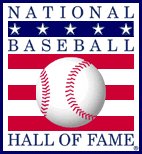
- International Association of Sports Museums and Halls of Fame
- Stickball Hall of Fame and
Museum
- Pro Football Hall of Fame and
Museum
- The College
Football Hall of Fame in South Bend
- International Boxing Hall of Fame and
Museum (Canastota, NY)
- Hockey Hall Of Fame
- International Swimming Hall of Fame and
Museum (Canastota, NY)
- International Bowling Hall of Fame and
Museum (Canastota, NY)
CASE STUDY:
IMMORTALITY FOR THE ROCK AND ROLL ELECT
While academicians
argued about our culture's death denials, the music of the post-war baby-boomers
was to become imbued with death, not only being a frequent theme of its songs,
but the premature fate of its performers (around whom dead rock star cults were
to emerge). One of the better known halls of fame enshrine their elect.
- We'll Always Remember--a Rock Obituary and Tribute Website
- Rock and Roll Hall of Fame and Museum
IMMORTALITY
CAPITALISM-STYLE
Given its commodification of all aspects of life and
death--coupled with Americans' death fears, faith in science, and desires
 for immortality--it is not surprising that capitalism has moved into the
businesses of life-extension and scientific resurrection. In 1996, British
researchers announced work on a "Soul
Catcher" memory chip which, within 30 years, will
be able to capture our feelings and thoughts. Said Chris Winter, head of
the Telecom artificial life team, "By combining this information with
a record of a person's genes, we could recreate a person physically, emotionally
and spiritually. This is the end of death--immortality in the truest sense"
(Reuters release cited in Parade Magazine, December 29, 1996). Can't
wait until 2030? Check out the Alcor Life
Extension Foundation, the self-proclaimed leader in cryonic
preservation, the feasibility studies brought to you from the American Cryonics Society, and a legitimating ideology from the Cryonics
Institute. See also "Scientific
and Medical Aspects of Human Cloning," a collection of
presentations from the August 2001 workshop sponsored by the National Academies'
Committee on Science, Engineering, and Public Policy and the Board on Life
Sciences.
for immortality--it is not surprising that capitalism has moved into the
businesses of life-extension and scientific resurrection. In 1996, British
researchers announced work on a "Soul
Catcher" memory chip which, within 30 years, will
be able to capture our feelings and thoughts. Said Chris Winter, head of
the Telecom artificial life team, "By combining this information with
a record of a person's genes, we could recreate a person physically, emotionally
and spiritually. This is the end of death--immortality in the truest sense"
(Reuters release cited in Parade Magazine, December 29, 1996). Can't
wait until 2030? Check out the Alcor Life
Extension Foundation, the self-proclaimed leader in cryonic
preservation, the feasibility studies brought to you from the American Cryonics Society, and a legitimating ideology from the Cryonics
Institute. See also "Scientific
and Medical Aspects of Human Cloning," a collection of
presentations from the August 2001 workshop sponsored by the National Academies'
Committee on Science, Engineering, and Public Policy and the Board on Life
Sciences.
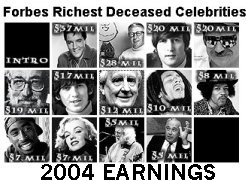 One guaranteed way for the dead to remain
"alive"
in capitalist economies is to continue to produce or consume. Following
this logic, Elvis (there
he is now!), Jim Morrison, and other "deceased" rock stars are
"alive" because they continue "producing" revenue from
their record sales. (If you want to put the dead to work peddling your product
odds are that you will have to deal with the Curtis
Management Group.) Mickey Mantle's afterlife seems assured given that
the value of his game artifacts inflated 25 to 100 percent in the year
following his death. Numerous communities have grown dependent on the
revenues generated by the dead, whose memories are collectively enshrined in the
myriad of halls of fame (such as the Paper
Industry International Hall of Fame in Appleton, Wisconsin, the
National Teachers Hall of Fame in Emporia,
Kansas, the American Police Hall of
Fame in Tutisville, Florida, or the
Insurance Hall of Fame on the
Campus of the University of Alabama). And the ten thousand Americans in irreversible vegetative
states remain "alive" because they are still consumers of medical
care.
One guaranteed way for the dead to remain
"alive"
in capitalist economies is to continue to produce or consume. Following
this logic, Elvis (there
he is now!), Jim Morrison, and other "deceased" rock stars are
"alive" because they continue "producing" revenue from
their record sales. (If you want to put the dead to work peddling your product
odds are that you will have to deal with the Curtis
Management Group.) Mickey Mantle's afterlife seems assured given that
the value of his game artifacts inflated 25 to 100 percent in the year
following his death. Numerous communities have grown dependent on the
revenues generated by the dead, whose memories are collectively enshrined in the
myriad of halls of fame (such as the Paper
Industry International Hall of Fame in Appleton, Wisconsin, the
National Teachers Hall of Fame in Emporia,
Kansas, the American Police Hall of
Fame in Tutisville, Florida, or the
Insurance Hall of Fame on the
Campus of the University of Alabama). And the ten thousand Americans in irreversible vegetative
states remain "alive" because they are still consumers of medical
care.
 The property rights of the dead were extended by the 1998
Sonny Bono Copyright Term Extension Act. In 1790, copyrights lasted 14
years. The Bono act, upheld by the U.S. Supreme Court in 2003,
lengthened protection by
20 years to 70 years after the death of the inventor or author, if the person is
known. (Works owned by corporations are protected for 95 years.)
The property rights of the dead were extended by the 1998
Sonny Bono Copyright Term Extension Act. In 1790, copyrights lasted 14
years. The Bono act, upheld by the U.S. Supreme Court in 2003,
lengthened protection by
20 years to 70 years after the death of the inventor or author, if the person is
known. (Works owned by corporations are protected for 95 years.)
EMERGING TRANSCENDENCE INDUSTRIES
A new line of services are emerging where the deceased can
continue interacting with the living. In the early 1990s, for instance, a
Fairport, N.Y. company called Cards From Beyond appeared, offering one
the ability after death to send cards to loved ones for Easter, Christmas,
Thanksgiving, and anniversaries. From Loving Pup, Inc. came one of
the first posthumous
email services: "You care about your family, friends, and loved ones, show you
care by leaving them each an e-mail to be delivered after you pass on." As of
2007, other postmortem emailing opportunities exist through
The Last Email ("your thoughts live
on") and Deathswitch ("bridging
mortality"). Or how about placing a phone call from a deceased relative? With AT&T Labs' Natural
Voices speech software, voice cloning is now a reality. Type your
message and let the dead utter your words.
 In addition to providing resources on estate planning, funeral planning, end-of-life care, grief
and loss, FinalThoughts.com and
MyLastEmail.com also offer "Afterlife Email Service."
And there's also AFTERLIFE, “a not-for-profit organization whose mission is to archive Web sites after their authors die and can no longer support them.”
This mission is shared with Immortality Foundation, "a non-profit corporation whose sole purpose
is to be the permanent guardians of the collections of words and other materials
entrusted to us, thus allowing these materials to remain alive as long as humanly
possible."
In addition to providing resources on estate planning, funeral planning, end-of-life care, grief
and loss, FinalThoughts.com and
MyLastEmail.com also offer "Afterlife Email Service."
And there's also AFTERLIFE, “a not-for-profit organization whose mission is to archive Web sites after their authors die and can no longer support them.”
This mission is shared with Immortality Foundation, "a non-profit corporation whose sole purpose
is to be the permanent guardians of the collections of words and other materials
entrusted to us, thus allowing these materials to remain alive as long as humanly
possible."
 Relict Memorials of
Mill Valley, California, will turn loved ones' cremated remains into
customized granitelike slabs or sculptures. Cremains are mixed with pulp
by Timothy Hawley Books
to produce the pages of bound volumes called "bibliocadavers."
SeaRest Inc. will encase cremains within concrete blocks to create artificial
reefs off the Florida coast as a "living memorial." Space
Services Inc., formerly Celestis, "makes it possible to honor the dream and
memory of your departed loved one by launching a symbolic portion of cremated
remains in Earth's orbit, on the Lunar surface or deep space." Cremains are also
turned into diamonds by LifeGem and into pencils by
Carbon
Copies. By 2007, a Funerary Art Movement was recognized (see
Funeria for examples) and the first
gallery of cremation urns and memorial art opened in northern California.
(Click
here for other cremains-dealing industries.)
Relict Memorials of
Mill Valley, California, will turn loved ones' cremated remains into
customized granitelike slabs or sculptures. Cremains are mixed with pulp
by Timothy Hawley Books
to produce the pages of bound volumes called "bibliocadavers."
SeaRest Inc. will encase cremains within concrete blocks to create artificial
reefs off the Florida coast as a "living memorial." Space
Services Inc., formerly Celestis, "makes it possible to honor the dream and
memory of your departed loved one by launching a symbolic portion of cremated
remains in Earth's orbit, on the Lunar surface or deep space." Cremains are also
turned into diamonds by LifeGem and into pencils by
Carbon
Copies. By 2007, a Funerary Art Movement was recognized (see
Funeria for examples) and the first
gallery of cremation urns and memorial art opened in northern California.
(Click
here for other cremains-dealing industries.)
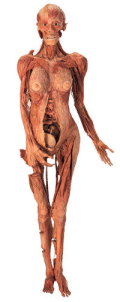 From Germany comes a curious form of bodily immortalization
called plastination.
Using a process invented by Dr. Gunther von Hagens, real corpses are
transformed into plastic. A revolutionary teaching tool for anatomy
classes, von Hagens' creations now tour the world as commercial
exhibitions of "anatomical artwork," attracting crowds and ethical
criticisms. Listen to NPR's April 30, 2001 report on "Body Art" here.
From Germany comes a curious form of bodily immortalization
called plastination.
Using a process invented by Dr. Gunther von Hagens, real corpses are
transformed into plastic. A revolutionary teaching tool for anatomy
classes, von Hagens' creations now tour the world as commercial
exhibitions of "anatomical artwork," attracting crowds and ethical
criticisms. Listen to NPR's April 30, 2001 report on "Body Art" here.
Electronically connect with the dead with Memory Medallion, a steel-encased computer chip that can be
 embedded in tombstones and memorial
plaques. Activated by a "touch wand," visitors can download a five-minute minimovie into their laptops
or PDAs.
embedded in tombstones and memorial
plaques. Activated by a "touch wand," visitors can download a five-minute minimovie into their laptops
or PDAs.
Finally, comes a product foreshadowing things to come from the biotech industries:
a Limited Edition Abraham Lincoln Pen containing replications of the 16th President's
DNA, produced by StarGene
Inc.. Founded by Kary Mullis, 1993 Nobel Prize winner in chemistry,
the company uses his patented PCR (polymerase chain creation) technology, to
clone DNA. This certainly is a new twist on the hair flowers Victorians
made to help preserve the memories of deceased family members.

CEMETERIES
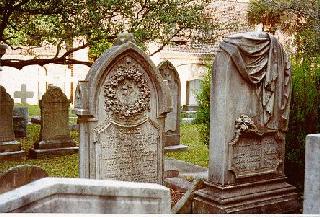 Beware ye who pass by As ye be now so once was I As I be now so must
ye be Prepare for death and follow me.
Beware ye who pass by As ye be now so once was I As I be now so must
ye be Prepare for death and follow me.
--Common 18th-Century New England Epitaph
Another way of avoiding oblivion is at least having
one's existence acknowledged on one's tombstone epitaph.
(See "The
inevitable hour," a collection of 17th- and 18th-century epitaphs from The
Economist.)
Cemeteries--the word from the Greek for "sleeping
place"--are cultural institutions that symbolically dramatize many
of the community's basic beliefs and values about what kind of society
 it is, who its members are, and what they aspire to be. We are, for instance, stratified in death
as we are in life, evident in the segregations of community cemeteries (or within a community's
cemetery) by race, ethnicity, religion, and social class. (Our class, in fact, has even located a
"Republican Cemetery" in the Texas Hill Country.) In 1999, as a fence separating blacks and
whites was being removed from a Jasper, Texas cemetery (where, a year earlier, three young
white men dragged to death behind their pickup truck James Byrd Jr., a disabled 49-year-old
black man) another was being erected in Tynan, Texas, separating the German-American
section of the Waldheim Cemetery from the Hispanic-American
section.
it is, who its members are, and what they aspire to be. We are, for instance, stratified in death
as we are in life, evident in the segregations of community cemeteries (or within a community's
cemetery) by race, ethnicity, religion, and social class. (Our class, in fact, has even located a
"Republican Cemetery" in the Texas Hill Country.) In 1999, as a fence separating blacks and
whites was being removed from a Jasper, Texas cemetery (where, a year earlier, three young
white men dragged to death behind their pickup truck James Byrd Jr., a disabled 49-year-old
black man) another was being erected in Tynan, Texas, separating the German-American
section of the Waldheim Cemetery from the Hispanic-American
section.
These cities of the dead may have been the precursors of the
cities of the living. Lewis Mumford speculated in The City in History: Its Origins, Its
Transformations, and Its Prospects
Early man's respect for the dead ... perhaps had an
even greater role than more practical needs in causing him to seek a fixed
meeting place and eventually a continuous settlement. Though food- gathering
and hunting do not encourage the permanent occupation of a single site,
the dead at least claim that privilege. Long ago the Jews claimed as their
patrimony the land where the graves of their forefathers were situated;
and that well-attested claim seems a primordial one. The city of the dead
antedates the city of the living. In one sense, indeed, the city of the
dead is the forerunner of the city of the living (1961:7).
 As members of the Association
for Gravestone Studies Home Page are quick to remind us, most of what
we know of the past is based on grave contents and inferred from funerary
artifacts. For example, anthropological excavations of graveyards have
revealed that the average height of Icelanders decreased steadily from
A.D. 1200 to 1800, coinciding with climactic deterioration; that, based
on the bones of 87 women buried in a British crypt between 1729 to 1852,
modern women's bones are weaker than those of their ancestors.
As members of the Association
for Gravestone Studies Home Page are quick to remind us, most of what
we know of the past is based on grave contents and inferred from funerary
artifacts. For example, anthropological excavations of graveyards have
revealed that the average height of Icelanders decreased steadily from
A.D. 1200 to 1800, coinciding with climactic deterioration; that, based
on the bones of 87 women buried in a British crypt between 1729 to 1852,
modern women's bones are weaker than those of their ancestors.
No content analysis of a cemetery would be complete without
consideration of the tombstones and their inscriptions. The relative
sizes of the stones have been taken as indicators of the relative power
 of males over females, adults over children, and rich over poor. In immigrant
graveyards, the appearance of inscriptions in English signifies the pace
of males over females, adults over children, and rich over poor. In immigrant
graveyards, the appearance of inscriptions in English signifies the pace
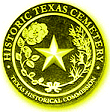 of a nationality's enculturation into American society. The messages
and
art reflect such things as the emotional bonds between family members and
the degree of religious immanence in everyday life (for insight into the meaning of tombstone
iconography see Cristina Leimer's The
Tombstone Traveller's Guide, Betty
Willsher's Emblems of Mortality, and Steve Johnson's [webmaster of Cemetery
Records Online] The Cemetery Column).
For one of the best resources on early American gravestones, see the Farber
Gravestone Collection, courtesy of the American Antiquarian Society. What inferences can you make from the following chronology of images? Be careful. Consider
the lessons learned in the analysis of early nineteenth-century gravestones of Geauga county, Ohio.
of a nationality's enculturation into American society. The messages
and
art reflect such things as the emotional bonds between family members and
the degree of religious immanence in everyday life (for insight into the meaning of tombstone
iconography see Cristina Leimer's The
Tombstone Traveller's Guide, Betty
Willsher's Emblems of Mortality, and Steve Johnson's [webmaster of Cemetery
Records Online] The Cemetery Column).
For one of the best resources on early American gravestones, see the Farber
Gravestone Collection, courtesy of the American Antiquarian Society. What inferences can you make from the following chronology of images? Be careful. Consider
the lessons learned in the analysis of early nineteenth-century gravestones of Geauga county, Ohio.
Here's one reading: The imminent millennialism sensed
by the Puritans and their contempt for mortal existence led to the skull
and crossbones being the most persistent tombstone symbol of early New
England days (Habenstein and Lamers, The History of Funeral Directing
1962:201). Over time, with increasing hope in a desirable immortality and
the Romantic faith in the man's perfectibility, there was a concurrent
change from skeletal images to portrayals of winged cherubs on the
gravestones.
With increasing religious pluralism, urbanization,
literacy, and the growing role of science and technology, Christianity
retreated from everyday life. With this fading of the sacred, moral absolutes
were to dissolve, and no longer could identity taken for granted. During
the nineteenth century, the private self and the cult of romantic death
arose out of the emotional attachments that were replacing the traditional
economic bondings of family members. People became more concerned with
others' deaths than with their own, realizing that it was only through
 these significant others that one's true, unique self was made possible.
As grief became the pre-eminent emotion, tombstone art shifted to willow
trees, ornate urns, and grieving widows or angels. For a tour of Mt.
Auburn Cemetery, the site that epitomized the rural cemetery movement of
the first half of the nineteenth century, click
here.
these significant others that one's true, unique self was made possible.
As grief became the pre-eminent emotion, tombstone art shifted to willow
trees, ornate urns, and grieving widows or angels. For a tour of Mt.
Auburn Cemetery, the site that epitomized the rural cemetery movement of
the first half of the nineteenth century, click
here.
The contemporary uniformity of tombstones bearing brief
bureaucratic summaries of the identities of those beneath can be taken
as evidence of the rationalization, bureaucratization, and homogenization
of our times. But there are some clear signs of change. Check out
the product on the left, a digital tombstone.
 If you enjoy such analyses you may be a taphophile and not even know it!
For books and links on the subject check out
"Books of
Bones." Other resources:
If you enjoy such analyses you may be a taphophile and not even know it!
For books and links on the subject check out
"Books of
Bones." Other resources:
- City
of the Silent, "the web's most extensive cemetery site"
- Cyndi's List of
Cemeteries and Funeral Homes, this site of genealogy fame has an
impressive listing of cemeteries
- Cemeteries: Optima
philosophia et sapientia est meditatio mortis another great index of cemetery sites
- Jonathan Clark's After Life: Streatham Cemetery--animated photographs through four seasons
- Northstar Gallery of Cemetery and Memorial Art--featuring some of the most sensual
funerary images from Europe and the U.S.

- Cities
of the Dead--a guide to the cemeteries of New Orleans
- The Sepulcher
- The
Page of the Dead-- European cemeteries and stories of the fates of some
dead notables
- Underground Paris--"Far below the city streets of Paris, in the quiet, damp darkness,
seven million Parisians lie motionless. Their skeletons, long since disinterred
from the churchyard graves their survivors left them in, are neatly stacked and
aligned to form the walls of nearly one kilometer of walking passage."
- Writ
in Water: An International Gallery of Memorials for the
Dead--images from England, France, Italy, Ireland, Salem and Concord Massachusetts, New Orleans, and Santa Cruz
- The Adams Residence photos of English, Irish and Parisian cemeteries in
addition to macabre short stories and famous last words
- OldBones.Net superb photographs of old New England tombstones
& mortuary relics, also featuring collection of humorous epitaphs. A
related photo-rich site is "Old
Burial Hill, Marblehead," MA.
- Steve Grimm's Old West Gravesites
- Beneath Los Angeles Memorials of "the famous, the infamous, and the just plain dead"
- OldBones.Net superb photographs of old New England tombstones
& mortuary relics, also featuring collection of humorous epitaphs
- 17th, 18th and 19th Century Cape Cod Gravestones

- The Political Graveyard--"The Web Site That Tells Where the Dead Politicians are
Buried," broken down by a huge alphabetized index of American cemeteries
- Graveyards of
Chicago
- And
don't forget the critter memorials! Roadside Pet Cemetery
- Professor Gary Collison's
Pennsylvania's Historic Cemeteries: A Brief History
- Steve Paul Johnson's "The
Cemetery Column"

- Tomb With a View--a quarterly newsletter "about the appreciation, study and preservation of the art and heritage in
historic cemeteries"
- Necronicles--a webzine for cemetery photographers
- Sandra Kehoe-Forutan's Necrogeography Bibliography
- CemSearch a tool to search for surnames through cemetery inscriptions pages throughout the web
- The
Home Page of Summum: Is mummification for you or your pet?
A new strategy for body disposals is to send cremains into
earth orbit, and even into deep space. Four missions have been launched as
of Spring 2001 (check site for launch photos and videos). For $5,300 Celestis will orbit your ashes in its low-end
"Earthview Service." Dr. Eugene Shoemaker (of comet fame) was a
passenger on the first "Lunar Service," which will set you back
$12,500 (payment plans available). Yet to come is the "Voyager
Service," which will send cremains into deep space.
ELECTRONIC
MEMORIALS

One product of Romanticism and the rural cemetery
movement
of the early nineteenth cemetery was the Mt. Auburn Cemetery in Cambridge,
Massachusetts. This garden cemetery apparently captured the imaginations
of the time as it became a major tourist destination for both American
and European visitors, and was to be frequently modeled. It is a didactic
place where the stories of unique selves are revealed on the tombstone
inscriptions. How different these biographical markers are from the contemporary
homogenized inscriptions, where little more than bureaucratic details (e.g.,
name with birth and death dates) are noted.
In reaction to such homogenized levelings, it is not
surprising that individuals now seek alternative ways to provide dignity
and identity to their deceased loved ones, to reaffirm that their lives
have made a difference. For a formal sociological analysis of this trend see Hans Geser's "Yours Virtually Forever:
Death Memorials and Remembrance Sites in the WWW". Examples of such electronic
memorial sites include:

OTHER WAYS TO
REMEMBER/ACKNOWLEDGE THE
DEAD
OBITUARIES
 One facet of funerary ritual involves the obituary.
And for whom are they written and for what reason? Indeed, obituaries are
written so that the broader community knows of the loss of one of its members
and of the bereavement status of the principle survivors. But they also
have a didactic function. Like the eulogy, it is here where a biography
is summed up, an individual's contributions to the social order are recalled,
and the meaning of a life is assessed. When you think about it, there are
no other times when such grand summations are made and reflected
upon.
One facet of funerary ritual involves the obituary.
And for whom are they written and for what reason? Indeed, obituaries are
written so that the broader community knows of the loss of one of its members
and of the bereavement status of the principle survivors. But they also
have a didactic function. Like the eulogy, it is here where a biography
is summed up, an individual's contributions to the social order are recalled,
and the meaning of a life is assessed. When you think about it, there are
no other times when such grand summations are made and reflected
upon.

Obituaries, these "social registers of the middle
class" as George Gerbner called them, provide a wealth of information
for social scientists. Want to observe changes in the sexism or racism
in your community? Why not look at a sample of a century's worth of obituaries
in your local newspaper and record the percentage of the obituaries going
to women and minorities and note their length relative to obituaries given
to white males (controlling for age at death and cause)? For an illustration,
see "Death as a Measure of Life: A Research Note on the Kastenbaum-Spilka
Strategy of Obituary Analyses" in Omega: Journal of Death and Dying,
17(1), 1986-87:65-78. In his obituary analyses, Gary Long ("Organizations
and Identity: Obituaries 1856-1972," Social Forces 1987, 65(4):964-1001)
reported a longitudinal trend toward impersonal, standardized, categorical,
"objective" portrayals of completed lives. Rarely do we learn
nowadays from these resume-type bios how others' lives were impacted by this person. To what extent is such silence related to the moral crises
of our times?
- Tributes.com--"Because Every Life Has a Story"
- Yahoo's
Obituaries
- National Obituary Archive
- Obituary Links Page--State-by-state directory of obituaries
& obituary resources
- Obituary Central--"Headquarters for researching obits on the web"
- New York TimesObituaries--both contemporary and "from the archives"
- Good Bye! The Journal of Contemporary Obituaries
- The Blog of Death
- Annie
Wiley and her Obituary Scrapbook (Kentucky obits from 1924-64)
- Celebrity Obituaries
Fear of Flying Site: Celebrities who died in airplane crashes
The Bond Orchard: Deceased B-movie actors and directors
Fuller Up: The Dead Musician Directory (and how they got that way)
ROADSIDE MEMORIALS

Across the country we see the proliferation of roadside crosses, or
descansos, marking traffic fatalities. Though many point to Hispanic origins of the practice, other West European groups
make similar memorializations. They indicate not only the time of death, which
we've long dutifully noted on gravestones, but also the precise place of
individuals' untimely deaths.
From ChrisTina Leimer's Tombstone Traveller's Guide,
Roadside Memorials: Marking Journeys Never Completed
Roadside Memorials: A Photographic Documentary
Another commodification of grief: Roadside Memorials--mail-order roadside crosses.
"Roadsidememorials.com will not be responsible for any accidents or injuries
due to the placement of your cross."
HALLS OF
FAME
In February of 1985 six pioneer inventors were inducted
into the The National Inventors
Hall of Fame in Arlington, Virginia. These inventors, credited with
originating air-conditioning, the artificial heart, phototypesetting, tape
recording and Teflon, join 53 others. One year later, seven recently discovered
asteroids were named for the seven astronauts who died in the explosion
of the space shuttle Challenger. In 1991, Barry Goldwater, Chuck Connors
("The Rifleman") and James Drury ("The Virginian")
were inducted into the Cowboy
Hall of Fame Home in Oklahoma City. In 1994, the Comedy Hall of Fame
inducted Bob Hope and George Carlin.
Work, like religion, provides immortality to the elect.
Art galleries and libraries are filled with works of the dead. Gutzon Borglum
is immortalized by his Mt. Rushmore Memorial, Leonardo da Vinci by the
"Mona Lisa", Thomas Edison by the incandescent bulb, and Henry
Ford by the automobile bearing his name. The Hartford, Connecticut law
firm of Day, Berry & Howard sports the name of three deceased partners,
and the memories of scientists live on in the names of the astronomical
bodies, plants and animals they either discovered or hybridized. Work provides
individuals the major opportunity to "leave one's mark."
As is evident in the links below, corresponding with
the rapid differentiation of the workplace has been a proliferation of
heavens. Memories of the work elite are maintained in a host of halls of
fame, for pickle packers and auctioneers alike. If one fails to gain the
highest forms of work-related immortality, as through induction into a
hall of fame or through one's works, there still possible means for being
remembered. In particular, there are the numerous "Who's Who"
compilations (i.e., Who's Who Among Elementary School Principles,
Who's Who In Commerce and Industry, Who's Who In Rock, and
Who's Who In Science in Europe). And, for academicians, if one fails
to make this compilation, one can at least make the card catalogue. Even
better, one's ideas can be celebrated in school texts--one's name is at
least remembered and perhaps even quizzed upon.
- National Inventors Hall of Fame
- International Photography Hall of Fame
- Labor Hall of Fame
- American Police Hall of Fame
- Military Intelligence Corps Hall of Fame
- U.S. Army Warrant Officer Hall of Fame (Ft. Rucker, Alabama)
- U.S. Army Military Police Hall of Fame (Ft.
Leonard Wood, MO)
- Kansas National Guard Hall of Fame
- National Women's Hall of Fame
- International Aerospace Hall of Fame
- National Aviation Hall of Fame
- Accounting Hall of Fame
- National Mining Hall of Fame
- Poker Dealer Hall of Fame
- Rockabilly Hall of Fame

TRANSCENDING
DEATH
THROUGH ORGAN
DONATIONS
- UCI
Willed Body Program: organ donation & mortuary science
- Body
Donation
- Body
Donations--Cadavers--Mortuary Science
- TransWeb
- Transplantation and Donation

THE POWER OF THE
DEAD OVER THE LIVING:
LAST
WILLS
AND TESTAMENTS
...a sociology of death not based on a sociology of
types of inheritance risks being overly idealist and abstract.
--Jean-Claude Chamboredon
 To what extent can the dead continue to exercise control
over the living through stipulations in trusts and wills? Money is most
certainly an instrument for perpetuating not only the family name (and
whatever that might entail) but the memory of the deceased as well. An
estate, a "patrimony," represents an image of the father, and
in patriarchal societies not even socialist regimes are willing to destroy
this immortal visage through massive estate taxes in order to redistribute
the wealth of the living. Need a research topic? How about
"incentive trusts"?
To what extent can the dead continue to exercise control
over the living through stipulations in trusts and wills? Money is most
certainly an instrument for perpetuating not only the family name (and
whatever that might entail) but the memory of the deceased as well. An
estate, a "patrimony," represents an image of the father, and
in patriarchal societies not even socialist regimes are willing to destroy
this immortal visage through massive estate taxes in order to redistribute
the wealth of the living. Need a research topic? How about
"incentive trusts"?
- Wills of Celebrities and Ordinary People, 1493-1998
- Mark
Welch's Wills and Testaments of the famous and not so famous on the web
- Leave A Legacy

NDEs: EVIDENCE OF A HEREAFTER?
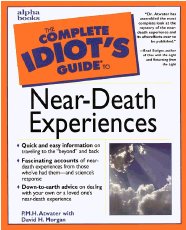 Since Raymond Moody's Life After
Life (1975), we have heard much about Near-Death Experiences (or
NDEs): the out-of-body experiences, a life-review, the tunnel of darkness,
receptions with deceased loved ones, people of light, the sense of peace
and painlessness, and the reluctance to return. A 1981 Gallup poll found
some 15 percent of the surveyed reporting having had such experiences.
Such reports became the cover story ("Visions of Life After Death:
The Ultimate Mystery") of the March 1992 issue of Life magazine and
the subject of Betty Eadies's best-seller Embraced by the Light.
There is a Journal of Near-Death Studies, an International
Association for Near-Death Studies, and over one hundred support groups.
In January 2002, ABC News ran the story "Brushes
With Death: Scientists Validate Near-Death Experiences."
Since Raymond Moody's Life After
Life (1975), we have heard much about Near-Death Experiences (or
NDEs): the out-of-body experiences, a life-review, the tunnel of darkness,
receptions with deceased loved ones, people of light, the sense of peace
and painlessness, and the reluctance to return. A 1981 Gallup poll found
some 15 percent of the surveyed reporting having had such experiences.
Such reports became the cover story ("Visions of Life After Death:
The Ultimate Mystery") of the March 1992 issue of Life magazine and
the subject of Betty Eadies's best-seller Embraced by the Light.
There is a Journal of Near-Death Studies, an International
Association for Near-Death Studies, and over one hundred support groups.
In January 2002, ABC News ran the story "Brushes
With Death: Scientists Validate Near-Death Experiences."
What is to be made of such reports? Does their supposed
universality suggest evidence of the existence of an afterlife or can they
be explained (which, interestingly, comes from the Latin word "to
flatten out") in terms the physical effects of brain activity, such
as cerebral anoxia due to oxygen deprivation or the stimulation of some
massive release of endorphins (perhaps Mother Nature's compensation for
extinguishing the survival impulse)? Whatever they mean, they certainly
call both faith and science into question. It is interesting how many religious
figures accept the scientific explanation (it would be upsetting if the
quality of NDEs was unrelated to the moral worthiness of the lives lived
by their experiencers) while some scientists, like physician Michael Sabom
(Recollections of Death: A Medical Investigation), are accepting
the religious perspectives.
 Several observations. First, such experiences are associated
not with death but with the dying process. Second, increases in their reported
frequencies may well be attributable to the evolution of our medical arts,
which (as evidenced by the thousands of those in persistent vegetative
states) have created a new purgatory, a new liminal realm between the worlds
of the living and the dead. Third, there is an absence of language to describe
their out-of-the-ordinary nature. Unlike the Tibetans, Americans do not
have over one hundred words to describe different states of being; they
do not have (at least before Moody and NDE tags) cultural "frames"
for their decipherment. Fourth, we must not forget the highly religious
nature of Americans (see "You
Never Have to Die". And finally, such experiences may be one of
those Jungian archetypes owing to their apparent universality. When observing
parallel descriptions in religious and philosophical (recheck Plato's
story of Er in the Republic) texts, Moody argues how NDEs may
be the origin of such notions as the soul, the spirit, and human duality.
Several observations. First, such experiences are associated
not with death but with the dying process. Second, increases in their reported
frequencies may well be attributable to the evolution of our medical arts,
which (as evidenced by the thousands of those in persistent vegetative
states) have created a new purgatory, a new liminal realm between the worlds
of the living and the dead. Third, there is an absence of language to describe
their out-of-the-ordinary nature. Unlike the Tibetans, Americans do not
have over one hundred words to describe different states of being; they
do not have (at least before Moody and NDE tags) cultural "frames"
for their decipherment. Fourth, we must not forget the highly religious
nature of Americans (see "You
Never Have to Die". And finally, such experiences may be one of
those Jungian archetypes owing to their apparent universality. When observing
parallel descriptions in religious and philosophical (recheck Plato's
story of Er in the Republic) texts, Moody argues how NDEs may
be the origin of such notions as the soul, the spirit, and human duality.
It goes without saying that the research possibilities
into Near-Death Experiences are numerous. Instead of exploring the veracity
or universality of such experiences, we could focus on the understudied
consequences of having had them. How are lives changed? For some, a NDE
has led to new life missions. For one San Antonian, the experience was
a catalyst for personal growth, and he now explores the ways in which NDEs
can be painlessly duplicated for collective growth. For another, the experience
instructed her to "do something" for children in exchange for
her life. She created SAV- BABY (1-800-SAV-BABY; 301 S. Frio, Suite 480
San Antonio, TX 78207), a non-profit organization, now approaching
its ninth year, dedicated
to saving abandoned newborn babies.
Given how NDEs may enrich the meaningfulness of existence
and instill an altruistic direction to life, it should not be surprising that some
researchers are attempting to artificially create the experience. Dr.
Karl Jansen responded to this page with reference to one substance that produces
such experiences and to his new book Ketamine:
Dreams and Realities.
- Kevin Williams' Near-Death Experiences and the Afterlife
- International
Association for Near-Death Studies
- Near-Death Experience Research Foundation
- From About.com, Guide Picks for Near-Death Experiences
- Kevin Williams' Near-Death Experiences and the Afterlife
- Scott
Roberts's Collection of personal accounts, researcher interviews on NDEs
- Home Page of the After-Death Communications
Project
- Diane Goble's "Beyond the Veil--Q&A from
a NDE experiencer
-
Yahoo! Directory of Near-Death Experiences
- The Dannion Brinkley story and how NDEs supposedly produced visions of the future
- Keith Augustine's
"The Case Against Immortality"
GHOSTS: MORE
EVIDENCE OF A
SPIRITUAL
REALM?
In Man, God, and Immortality: Thoughts on Human
Progress (Cambridge: Trinity College Press, 1968), Sir James George
Frazer argues that the belief in the existence of ghosts is one manifestation
of human's belief in the immortality of the human soul, leading to "race
after race, generation after generation, to sacrifice the real wants of
the living to the imaginary wants of the dead" (p. 380). Any thoughts
why Virginia, according to the Ghost Research Society, ranks first in ghost
population? (You may want to check out the National
Directory of Haunted Places for the spirit hangout closest to you.)
Need a spiritual entity to commune with? In the early 1980s, clients of
California's Ghost Adoption Agency could for $185 "adopt" such
personages as William Shakespeare or Attila the Hun.
- SpiritWeb: A "Comprehensive Web-Site Promoting Alternative Spiritual Consciousness"
- About.com's Guide picks for Ghosts and Hauntings
- Prairie
Ghosts.
Ghost detecting equipment available here, along with the ghost photograph
of the week.
- Ghost
Hunters Gallery. Ghost photography is alive and well!
- Paranormal sites--with
your
mind in mind!

 Return to Kearl's Death Index
Return to Kearl's Death Index
 Arthur Koestler, noted author and founder of Exit,
wrote before his own suicide: "If the word death were absent from
our vocabulary, our great works of literature would have remained unwritten,
pyramids and cathedrals would not exist, nor works of religious art-and
all art is of religious or magic origin. The pathology and creativity of
the human mind are two sides of the same medal, coined by the same mintmaster"
(1977).
Arthur Koestler, noted author and founder of Exit,
wrote before his own suicide: "If the word death were absent from
our vocabulary, our great works of literature would have remained unwritten,
pyramids and cathedrals would not exist, nor works of religious art-and
all art is of religious or magic origin. The pathology and creativity of
the human mind are two sides of the same medal, coined by the same mintmaster"
(1977).


 Such is the essence of symbolic immortality. It is
through memory that the living hold on to the dead, inspiring such creations
as the Great Pyramids of Egypt and the
Such is the essence of symbolic immortality. It is
through memory that the living hold on to the dead, inspiring such creations
as the Great Pyramids of Egypt and the 








 Beware ye who pass by As ye be now so once was I As I be now so must
ye be Prepare for death and follow me.
Beware ye who pass by As ye be now so once was I As I be now so must
ye be Prepare for death and follow me. 



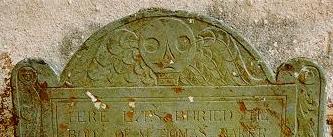
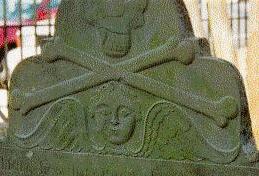











 Since
Since 
